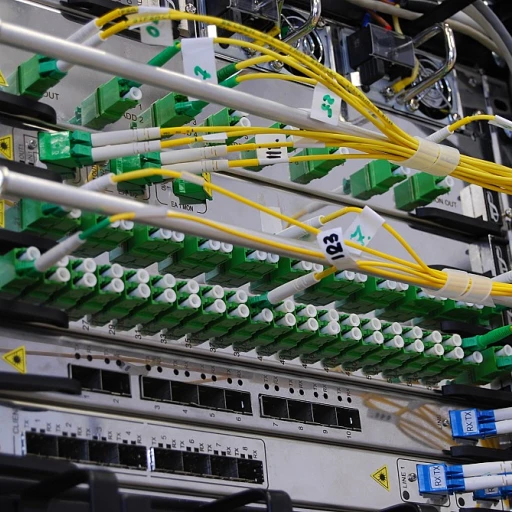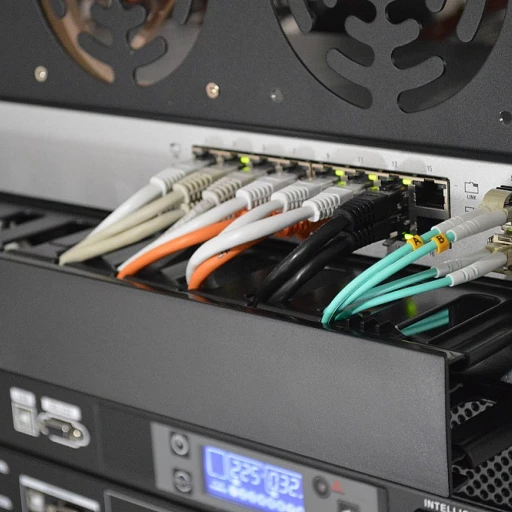Understanding low code RPA
What makes low code rpa special?
Low code RPA, or Low-Code Robotic Process Automation, is transforming the way businesses approach automation. Instead of the traditional route where writing a lot of code was mandatory, businesses now leverage low code platforms to automate repetitive tasks. These platforms usually come with features like drag-and-drop interfaces which make it easier for even citizen developers, those without a coding background, to create automation applications.
For instance, Microsoft Power Automate is one such tool that enables businesses to automate workflows between apps and services without needing extensive development skills. According to Gartner, by 2025, over 75% of large enterprises will be using at least four low-code development tools for both IT application development and citizen development initiatives.
How automation rpa fits into this
Robotic Process Automation (RPA) tools automate repetitive tasks that were once done by humans. Think of it like having bots handling mundane tasks like data entry, processing transactions, and answering simple queries. Leading platforms such as UiPath and SAP offer robust automation rpa capabilities that integrate seamlessly with low code systems.
With the combination of low code and RPA, businesses can automate processes more efficiently. This union is essential for digital transformation, allowing for rapid deployment of automation processes without a significant initial investment. A survey by UiPath revealed that 75% of their customers have seen a return on investment in under 12 months.
If you want more insights on how low-code examples are shaping the future of software, check out this article.
Key trends in low code RPA
Emerging patterns in the low code rpa space
Low code robotic process automation (RPA) is shaking things up, from the boardrooms of major corporations to the desks of small business owners. It's not just about cutting-edge technology; it’s about streamlining tasks and saving valuable resources. According to Gartner, by 2024, low code application development will be responsible for more than 65% of application development activity (source).
Increasing adoption among businesses
Businesses of all sizes are jumping on the low code RPA bandwagon. A recent study revealed that around 42% of companies are already using some form of RPA, with many leaning towards low code solutions due to ease of use and reduced dependency on IT departments (Source: Everest Group, 2022). This surge is driven by the ability to automate repetitive tasks, freeing employees to focus on more critical initiatives.
The impact of citizen developers
One of the most exciting trends is the rise of citizen developers. Gartner estimates that by 2023, the number of active citizen developers at large enterprises will be at least four times the number of professional developers. These everyday users, self-trained in platforms like Microsoft Power Automate and UiPath, are transforming how automation is implemented across workflows, providing a direct boost to efficiency and innovation.
Enhanced integration and scalability capabilities
The scalability and integration aspects of low code RPA are improving constantly. Platforms now support a more comprehensive range of third-party systems. Pegasystems, for instance, offers integration with major ERP and BPM platforms, ensuring seamless automation without needing complex coding (Source: Pegasystems). Additionally, advancements in AI and machine learning are enabling bots to handle more complex processes, pushing the boundaries of what's possible with automation.
Focus on business process optimization
There is a growing focus on optimizing business processes beyond mere task automation. Low code RPA platforms are incorporating more sophisticated analytics and dashboarding tools, empowering businesses to monitor and refine their workflows continuously. Integrated data fabric technologies and solutions to eliminate data silos are becoming commonplace, thus enhancing the overall efficiency of automated processes (Source: WatchData Fabric).
Security and compliance
Implementing RPA with low code tools isn't without its challenges, particularly regarding security and compliance. However, companies like UiPath and Microsoft have been actively addressing these issues. A report by Forrester (2022) emphasized the importance of adopting best practices around data governance and adhering to regulatory requirements to mitigate risks. Compliance features are increasingly being built into RPA platforms, ensuring data privacy and security at every step.
Tools and platforms for low code RPA
The backbone of modern business automation
When it comes to low code RPA, tools and platforms act as the foundation. Companies like UiPath, Microsoft Power Automate, and Pegasystems are leading the charge in this space. Their platforms provide the necessary infrastructure that brings automation dreams into reality. According to Gartner, by 2024, low code application development will be responsible for more than 65% of application development activity.
Leading tools and platforms
UiPath: UiPath offers an extensive range of RPA tools designed to streamline repetitive tasks. It's known for its drag-and-drop interface, which makes it accessible for citizen developers. The platform supports the automation of entire business processes, integrating smoothly with existing systems like ERP and CRM.
Microsoft Power Automate: Part of the Microsoft Power Platform, Power Automate allows users to automate workflows between applications and services. Whether it's connecting to a database, triggering alerts, or simplifying approvals, this tool has proven to be a game-changer. Businesses relish its user-friendly approach, often reducing the need for specialized developers.
Pegasystems: Pegasystems provides a comprehensive platform for robotic process automation (RPA) and business process automation (BPA). Its emphasis on model-driven development and real-time decision-making sets it apart. Pegasystems is renowned for helping businesses eliminate data siloes and establish an integrated data fabric for seamless operation.
Emerging trends in low code RPA
One emerging trend is the growth of digital transformation through unified RPA platforms. These platforms not only automate tasks but integrate with business intelligence tools and advanced analytics to provide actionable insights. Another trend is the increasing role of citizen developers in organizations. These non-technical users are empowered by low code tools to build applications, significantly reducing development times and associated costs.
The importance of choosing the right low code platform cannot be overstated. With a multitude of options available, businesses need to assess their specific needs and select tools that offer optimal process automation capabilities while catering to their unique operational requirements.
Case studies of successful low code RPA implementations
Real-world case studies: successful low code RPA implementations
Low code RPA isn't just a buzzword – it's genuinely making waves in real businesses. Let’s dive into some actual case studies where companies have successfully implemented low code RPA, showcasing its transformative potential.
Automation at PepsiCo
PepsiCo needed to modernize its payroll processes, which involved repetitive tasks slowing down productivity. The firm turned to low code RPA platforms to streamline this cumbersome process. By deploying Microsoft's Power Automate, PepsiCo achieved incredible results:
- 40% reduction in payroll processing time
- 20% reduction in payroll-related errors
James Rolleston, the senior payroll manager, mentioned, “Low code RPA has been revolutionary in how we approach routine tasks. The difference is tangible.”
Enhancing healthcare operations at Kaiser Permanente
Kaiser Permanente faced challenges in managing patient data entry – a time-consuming and error-prone task. By implementing RPA bots via UiPath, they managed to:
- Save over 4000 work hours annually
- Reduce data entry errors by 90%
Julia Carson, an operations manager, remarked, “The transition to low code RPA in our data systems not only improved efficiency but also significantly enhanced patient care.”
Optimizing finance processes at Genpact
Genpact, a key player in digital transformation, leveraged low code RPA tools to optimize its financial reconciliation process. Utilizing low code business process automation platforms, they achieved:
- 50% faster reconciliations
- 70% reduction in manual interventions
According to Rajesh Agarwal, the operations head, “The implementation of low code RPA has been pivotal in driving efficiency and cutting down on manual labor.”
Streamlining supply chain at DHL
DHL needed to streamline their supply chain operations. By adopting SAP's low code tools and RPA solutions, DHL succeeded in:
- Improving logistics planning time by 30%
- Eliminating data silos, leading to better data synchronization
As per James Campton, the logistics manager, “Integrating low code RPA into our supply chain management has brought unparalleled benefits, from efficiency gains to better data integration.”
Why low code RPA works
There's a common thread among these success stories: the ability of low code RPA to automate repetitive tasks and enhance operational efficiency. By embracing low code automation, businesses can reap the benefits of faster processes, reduced errors, and ultimately, happier teams.
While the road to automation isn’t devoid of challenges and controversies, as discussed earlier (see other sections), the success stories of PepsiCo, Kaiser Permanente, Genpact, and DHL underline that with the right tools and strategy, low code RPA can indeed drive impactful changes in business processes.
Challenges and controversies in low code RPA
Thinking beyond the hype: real-world stumbling blocks
Low code RPA promises a lot but it's not always rainbows. First off, security is a biggie. According to Gartner, improper use of low-code platforms can expose businesses to increased security threats. Imagine automating a business process and whoops, you accidentally open up a security hole. That's a nightmare!
Then there's the issue of scalability. Low code tools often excel in small-to-medium projects, but large-scale implementations can run into roadblocks. A report by Forrester Research found that 43% of enterprises faced scalability issues when adopting low-code platforms.
Another point of contention is integration. Not all low code tools play nice with existing IT ecosystems. Pegasystems' study reveals that 34% of businesses struggled to seamlessly integrate low-code RPA solutions with their legacy systems.
The shadow IT problem
Low code's ease of use is a double-edged sword. While it empowers citizen developers, it also encourages the rise of shadow IT—where departments create and use IT solutions without formal approval. SAP's research indicates that 29% of businesses encountered shadow IT issues exacerbated by low-code platform usage.
Lack of skilled professionals
Although low code is easy to use, there's still a requirement for skilled professionals to manage complex tasks and maintenance. Microsoft Power Automate faces criticisms for needing more skilled developers for complex automation, leading to higher operational costs. (Microsoft)
The hidden costs
Low code solutions seem cheap upfront but hidden costs lurk beneath. Maintenance, upgrades, and vendor lock-ins can make it pricey in the long run. A Deloitte report warns that hidden costs can increase total ownership costs by up to 24%.
The false sense of simplicity
Last but not least, low code RPA might give a false sense of simplicity. Businesses may underestimate the complexity of fully automating a business process, leading to half-baked solutions. The reality? RPA bots often need rigorous testing and ongoing tweaking to function correctly, points out experts from UiPath.
The future of low code RPA in business process automation
Predictions and trends shaping low code RPA’s future
The future of low code RPA is brimming with potential, defined by advancements that will make business process automation even more seamless and efficient.
Increased adoption among SMEs
You can expect small and medium-sized enterprises (SMEs) to jump on the low code RPA bandwagon. With costs typically being a barrier, the affordability and ease of use of low code platforms are becoming too good to ignore. A 2021 study by Gartner revealed a 30% increase in RPA adoption among SMEs within a single year. This is due to the increased accessibility and lower entry barriers posed by low code technologies.
Enhanced AI and ML integration
Artificial Intelligence (AI) and Machine Learning (ML) are making rapid strides and their integration with low code RPA platforms is on the rise. Microsoft Power Automate and UiPath, for instance, are actively incorporating AI capabilities to make RPA bots not only smarter but more adaptable. According to a Forrester report, 40% of RPA implementers plan to integrate AI and ML into their automation processes within the next year.
Greater participation from citizen developers
We've already seen how citizen developers have started to influence the landscape. As low code platforms evolve, their usage will expand beyond IT departments. Today, platforms like Microsoft Power Automate are allowing non-technical employees to automate mundane tasks through drag-and-drop interfaces. This democratization of RPA development is expected to grow, enabling more departments within organizations to harness the power of automation.
Expansion into diverse industries
Initially, RPA and low code tools catered mostly to finance and IT sectors. However, 2022 data from UiPath suggested a 50% uptake in industries such as healthcare, manufacturing, and retail. Take the case of healthcare provider Connected Care Enterprise, which uses low code RPA to streamline patient data management, reducing manual data entry time by 60%.
Focus on hyperautomation
As coined by Gartner, hyperautomation is not just a trend but a predicted leap in business efficiency. It involves the orchestrated use of multiple technologies like RPA, AI, and ML to achieve end-to-end automation. Tools like SAP's Intelligent RPA and Microsoft's integrated systems are already adopting this approach, striving to automate even complex, decision-based tasks.
In conclusion, while challenges remain, the future of low code RPA is undeniably promising. By making automation more accessible, intelligent, and widespread, the potential for transforming business process automation is immense.















